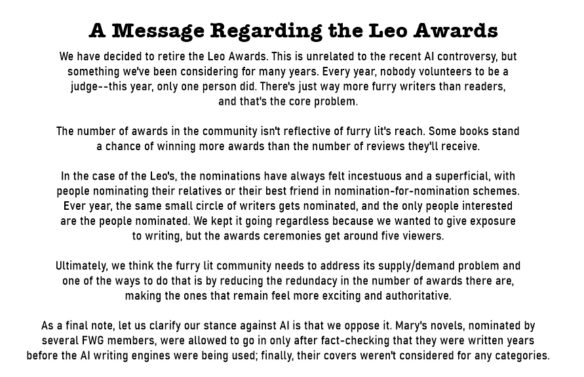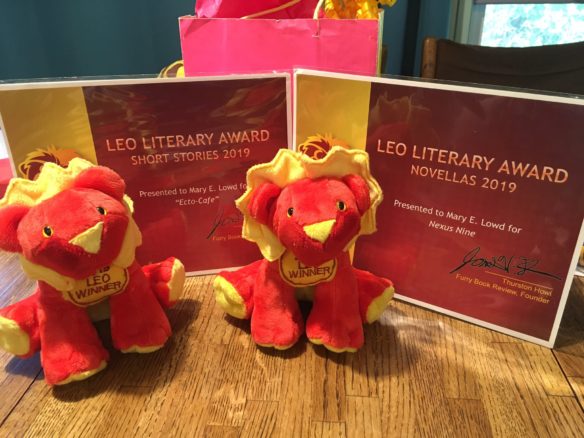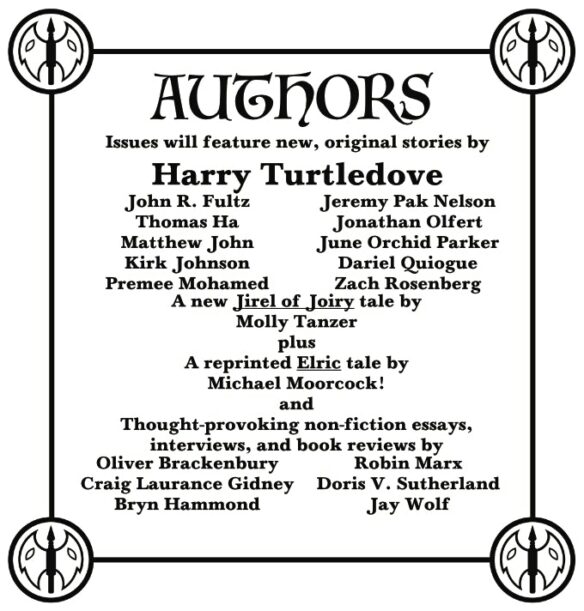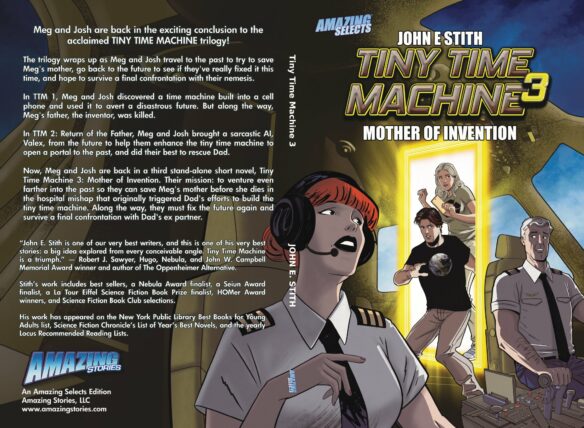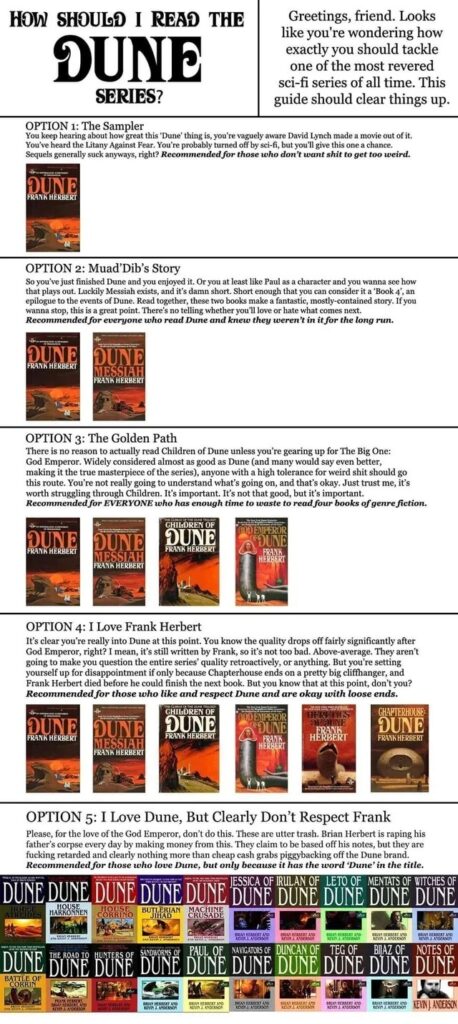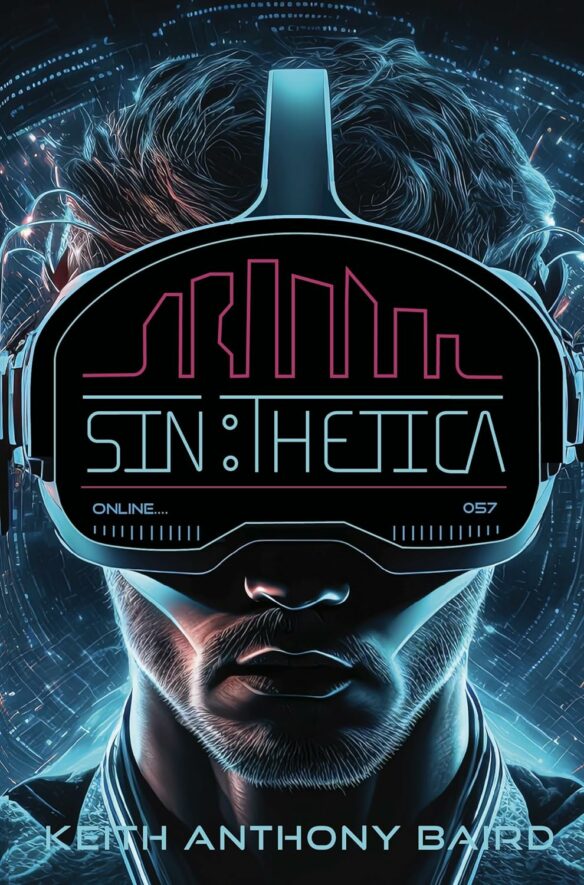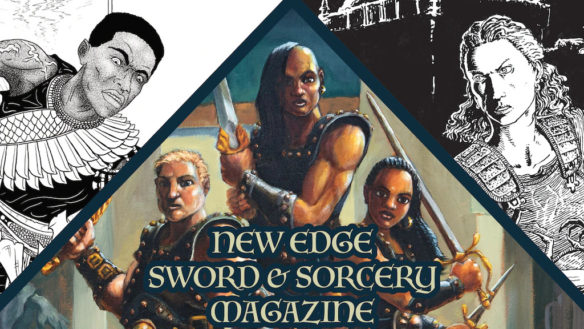(1) LIVING WITH REVIEWS. Here is Kirk McElhearn’s advice to writers about “How to Handle Online Book Reviews Without Losing Your Mind” at Literature & Latte.
If you’ve published a book, you’ll get reviews online from readers. Some may be positive and others negative. Here’s how to approach online book reviews with a healthy mindset.
Don’t get involved
For many years, Amazon allowed customers to comment on reviews; Goodreads allows this. Don’t post comments on negative reviews; this can escalate conflicts and potentially harm your reputation. There have been some cases where authors did this, leading to hostility, review bombing, and social media backlash.
Over-attention to online reviews can be bad for an author’s mental health. Some authors see negative reviews as a sign of failure, but not everyone will like your book. Some will love it and others will hate it. Focus on the good reviews and ignore the bad ones. Many authors avoid looking at reviews altogether; this is hard, because we are curious, and we seek approval, but you could ask a friend or colleague to look at reviews for you and filter the bad from the good.
Getting feedback from reviews
As a writer, you already know that giving and receiving feedback is delicate. Most negative reviews are hostile, but you can learn from the ones in the middle, the three-star and four-star reviews. Some of these reviews can give you insights into how readers perceive your characters, dialog, world-building, or plot, and they can help you find your weaknesses and improve them for your next book.
You’ll find that most people who aren’t writing the most negative reviews do have useful things to say. They took the time to write about your book because they enjoyed it and wanted to share their thoughts with other readers. These are readers who are likely to buy your next book, so learn from their comments….
(2) STEPHEN HICKMAN ONLINE EXHIBIT. [Item by Steven H Silver.] There is a Stephen Hickman on-line exhibit running through the end of the month at Ix Gallery: “Endymion II: More Selections from the Stephen Hickman Estate”.
STEPHEN HICKMAN (1949 – 2021) illustrated science fiction and fantasy for five decades. Among other publications, his work appeared in fourteen of the nineteen SPECTRUM annuals. Two books of his work are available: The Fantasy Art of Stephen Hickman; and Empyrean, The Art of Stephen Hickman. Two sculptures of H. P. Lovecraft subjects have been issued – the first by Bowen Designs and the second direct via Kickstarter. Major exhibitions include: New Britain Museum of Art New Britain Conn. 1978; Society of Illustrators show 1987 NYC; Delaware Art Museum shows, 1986 & 88 in Newark DE; Art Space Raleigh NC 1990; Canton Museum of Art Canton OH 1991; Olympia and York 1991 & 1992 NYC; Orlando Science Center Orlando FLA 1991; Smithsonian Air and Space 2009; At The Edge: Art of the Fantastic, Allentown PA 2012. Major awards include: Hugo Award [for the Space Fantasy Stamp Museum Wash DC 1992; SPECTRUM shows Society of Illustrators NYC 2005 & Booklet US Postal Service] 1993; seven Chesley Awards [one for Artistic Excellence]; Two SPECTRUM Gold Awards. Hickman’s work has earned him critical acclaim, including a World Science Fiction Convention’s Hugo Award and six Chesley Awards from the Association of Science Fiction and Fantasy Artists.
(3) PERRY RHODAN ORIGINS. Cora Buhlert follows Rachel Cordasco’s history of Perry Rhodan with her insights into German fans’ experience of the series in “Fantastic Fiction: Perry Rhodan – (West) Germany’s Space Hero” at the Seattle Worldcon 2025 blog.
Science fiction has many long-running science fiction series. However, there is no series longer running than Perry Rhodan, which as of this writing has racked up a staggering 3,312 volumes since 1961….
…You can’t write about Perry Rhodan without also discussing the German Romanheft. Romanhefte (literally “novel magazines,” the plural form of Romanheft) are A5-sized fiction magazines printed on woodpulp paper with a glossy cover. Every 64-page issue contains a single short novel, a novella. Sometimes they’re serialized; sometimes they’re standalone stories….
…The first issue, “Mission Stardust,” hit West German newsstands on September 8, 1961. Set in the not too far-off future of 1971, it featured a world on the brink of nuclear war, divided among two superpowers, a western and an eastern bloc. It was a world readers in 1961 recognised only too well. The Berlin Wall had been built barely a month earlier, the specter of nuclear war was ever-present, and West Germans knew they would likely be on the frontlines….
(4) NEW EDGE SWORD & SORCERY. There’s one week left in New Edge Sword & Sorcery’s campaign to crowdfund its next three issues at Backerkit. These will be issues (#5, #6, and #7. Cora Buhlert will have a non-fiction piece in issue 7.
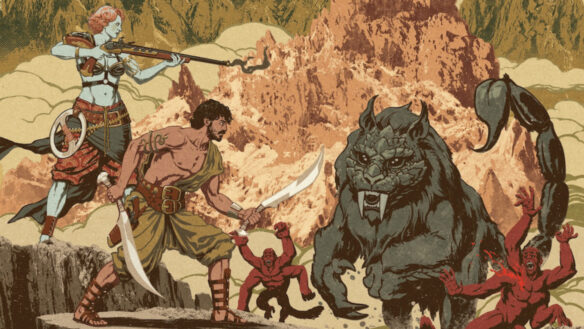
(5) WHY IT SOUNDS FAMILIAR. “Rhode Islanders rally for the Freedom to Read and against book bans at State House event” — Steve Ahlquist extensively quotes those who spoke.
…I want to center the views of two Rhode Island High School students, Sila Yang and Oscar Kunk, student organizers with ARISE (Alliance of Rhode Island Southeast Asians for Education).
Sila Yang:
I am currently a senior at Pilgrim High School. I remember, back in my sophomore year, I had to read a book called Fahrenheit 451 by Ray Bradbury, a novel that takes place in a dystopian future where books are outlawed and burned to ashes by firemen. The story’s themes explore the effects of censorship and conformity, and individuals’ struggle with self-identity and a desire for knowledge. However, the government brainwashes its citizens with the media, preventing them from learning and being open-minded. And when I looked at Trump’s Administration, I asked myself, “Where have I seen this all before?”
Censorship is a global issue. Even the freest of countries are unsafe by it. Despite being called the land of the free, we are threatened with censorship. According to the National Coalition Against Censorship, censorship prevents people from spreading ideas, opinions, and important messages. In the year 2025, the Trump Administration threatens to ban people relating to LGBTQ issues, racial history, and injustice. Not only does censorship affect writers and librarians, but it threatens the education of many students and silences marginalized communities, including myself as a Hmong American student.
I understand what it is like being hidden in the dark. The Vietnam War, let alone the Secret War of Laos, is rarely discussed, if ever, in our history classes. To have other history banned, including LGBTQ history and Black history – to have any history censored is a disgrace to history itself….
(6) DANGEROUS ISLAND. The Guardian’s Keith Stuart reviews “Atomfall, the survival game that draws from classic British sci-fi”.
The year is 1962 and you’ve just woken up in the shadow of the Windscale (now Sellafield) nuclear power station in Cumbria, five years after its catastrophic meltdown. Trapped in the sizeable quarantine zone surrounding the accident site, you must stay alive long enough to figure out how to escape – a task made rather more challenging by the presence of aggressive cultists, irradiated monsters and highly territorial terror bees. Imagine Stalker, but set in northern England, and you’re edging towards what Oxford-based developer Rebellion has in store.
Fallout may seem like another obvious inspiration for this irradiated game world, but after playing a two-hour demo, it’s clear the game draws more from classic British sci-fi. Here you are, stuck in the picturesque Lake District, with its lush woodlands, gurgling rivers and dry-stone walls. But all around you are the burned-out remains of 1960s cars and tanks, abandoned farm buildings and odd sounds and symbols that suggest something extremely sinister is happening. The development team have mentioned Dr Who, The Wicker Man the novels of John Wyndham as key inspirations, and you can see it in the grubby dislocated scene all around you. Approach a phone box and pick up the ringing handset, and you may hear a disembodied voice warning you about an apparently friendly character you met up the road. Stray into a cave and a ghost-like monster comes at you, infecting you with a paranoid mind virus. This is very much the stuff of Quatermass and Jon Pertwee-era Who….
(7) LAST OF US RETURNS. On HBO beginning April 2: “The Last of Us Season 2 Trailer: Pedro Pascal and Bella Ramsey”. Variety describes one of the trailer’s scenes:
…“This is where we live,” Joel says to Benjamin, pointing at a map. “And what’s that?” “The fence,” Benjamin replies. “What’s inside?” Joel asks, and Benjamin replies, “People,” as shots play of Joel and Ellie playing guitar and Ellie dancing with her new friend Dina (Isabella Merced). Finally, Joel asks, “What’s outside?” and his nephew says, “Monsters,” over shots of someone wielding a scythe, W.L.F. (Washington Liberation Front) tanks and soldiers, new antagonist Abby (Kaitlyn Dever) trudging through snow, and yes, monsters. Several rows of them sprint towards the fence outside of the Jackson settlement and are kept at bay by fiery explosions before Tommy is shown fearfully firing a large gun….
(8) TODAY’S BIRTHDAY.
[Written by Cat Eldridge.]
March 8, 1921 — Alan Hale Jr. (Died 1990.)
Let’s talk about Alan Hale Jr.
His father, Alan Hale Sr., played Little John in Robin Hood a century ago with Douglas Fairbanks and Wallace Beery, reprised the role in The Adventures of Robin Hood with Errol Flynn and Basil Rathbone, then played him once more in The Rogues of Sherwood Forest. We agreed that Robin Hood is genre, didn’t we?
Alan Hale Jr.’s best-known role is Captain Jonas Grumby — referred to by name only in the Gilligan’s Island pilot, thereafter as The Skipper. We’ve also agreed that series is genre. He’s owner and captain of the S.S. Minnow which ends up in the genre-based lost island setting with its passengers and sole crew member.
Counting the pilot, it ran for ninety-nine episodes over three seasons starting sixty-one years ago. There would later be three television films in the late Seventies and early Eighties in color. I don’t remember any of them, do any of you remember them?
There are two Filmation-produced animated sequel series which I’ve mercifully never seen as I’m really not keen of animated series made off live series and yes that includes the Star Trek one. They were The New Adventures of Gilligan and Gilligan’s Planet, both short lived. Hale Jr. voiced his character.
Genre appearances included The Wild Wild West where he shows up in “The Night of The Sabatini West” as department chemist/agent Brown. We also have here Jim Backus as funeral director Swanson. A Gilligan’s Island in-joke is of Brown remarking he is going on vacation on a desert island!
There’s also My Favorite Martin, Fantasy Island, ALF for television series, whereas films were The Giant Spider Invasion, The Fifth Musketeer, and well, and I didn’t see anything else but if I missed anything I’m sure I’ll hear about it.

(9) COMICS SECTION.
- Brewster Rockit
ruinsrewrites a classic. - Saturday Morning Breakfast Cereal explains the lack of contact from intelligent life.
(10) SMEARED CAMPAIGN. Futurism says, “Netflix Is Using AI to Upscale a 1980s Sitcom and the Results Are Borderline Horrific”.
From the very first frames, you can tell there’s something off about Netflix’s version of “A Different World,” a “Cosby Show” spin-off that aired on NBC from 1987 to 1993.
As spotted by developer and blogger Scott Hanselman, the streamer — or whatever rightsholder licensed the show to it — seriously bungled its efforts to upscale the decades-old footage, which was originally shot on film and made available on DVD since then.
The show was added earlier this month and is currently listed as being “HD.” But onscreen artifacts quickly make it clear that an algorithm is being used to increase the sharpness of pixelated frames, with sometimes comically awful results.
The intro credits already raise alarm bells, with mangled hands, misaligned facial features, bungled logos, and overall smeary lines that don’t meet up….
… Did we really need a smeared reimaging of a beloved 90s sitcom? “A Different World” is now besmirched by its association with Bill Cosby, but it was culturally important when it came out, confronting social issues like the HIV crisis in a mainstream way. It’s clearly important enough to put on Netflix; why isn’t it important enough to present viewers with a good viewing experience?…
… Text gets jumbled badly “because the AI can’t read,” Hanselman explained. “Rather than guessing the phrase or guessing the words, [the AI] just upscales that. It looks like hieroglyphics.”
“The problem is AI upscaling image technology isn’t quite there yet,” he concluded. “So what you end up with is an uncanny valley.”…
(11) IT’S NEAR BEYOND THE MOON, I KNOW BEYOND A DOUBT. “My heart will lead me there soon.” “Asteroid Mining Startup Loses Its Spacecraft Somewhere Beyond the Moon” reports Gizmodo.
A privately built spacecraft is tumbling aimlessly in deep space, with little hope of being able to contact its home planet. Odin is around 270,000 miles (434,522 kilometers) away from Earth, on a silent journey that’s going nowhere fast.
California-based startup AstroForge launched its Odin spacecraft on February 26 on a SpaceX Falcon 9 rocket. The probe was headed toward a small asteroid to scan it for valuable metals, in service of the company’s ambitious goal of mining asteroids for profit. AstroForge was also hoping to become the first company to launch a commercial mission to deep space with its in-house spacecraft, a dream that fell apart shortly after launch.
After Odin separated from the rocket, the company’s primary ground station in Australia suffered major technical issues due to a power amplifier breaking, delaying AstroForge’s first planned attempt to contact the spacecraft, the company revealed in an update on Thursday. The mission went downhill from there, as several attempts to communicate with Odin failed and the spacecraft’s whereabouts were unknown. “I think we all know the hope is fading as we continue the mission,” AstroForge founder Matt Gialich said in a video update shared on X…
(12) SMALL BANG THEORY. Smithsonian Magazine tells readers “Oldest Known Impact Crater Discovered in Australia”.
Researchers have discovered the oldest meteorite impact crater known to science in Western Australia’s Pilbara region. The feature is more than one billion years older than the previous first-place contender, and could hold important implications for understanding the origin of life on our planet. The discovery is detailed in a study published Thursday in Nature Communications.
“Before our discovery, the oldest impact crater was 2.2 billion years old, so this is by far the oldest known crater ever found on Earth,” Curtin University’s Tim Johnson, a geologist and co-author of the study, says in a statement. The team dated the crater to 3.5 billion years ago.
Curiously, the discovery of the world’s oldest meteorite impact crater actually began with a question about Earth: how did the first continents—our planet’s oldest rocks—form more than three billion years ago? While many theories involve geological processes powered by heat from Earth’s core, Johnson and his colleagues have previously argued that the formation of Pilbara would have required extraterrestrial energy.
They suggest that large meteorite collisions could have caused Earth’s mantle to form “blobs” of volcanic material that over time became continental crust. To make a compelling case, however, they had to find evidence of a meteor impact that corresponded with that timeline—which is exactly what they did.
“The crater was exactly where we had hoped it would be,” Johnson and some of his co-authors wrote in an article in the Conversation. But the team didn’t find a giant crater basin—after all, 3.5 billion years is plenty of time for erosion to do its thing. Instead, they found the next best option: a rock formation known as shatter cones, in an area of the Pilbara region called the North Pole Dome.
“They’re these beautiful, delicate little structures that look a little bit like an inverted badminton shuttle cock with the top knocked off,” Johnson explains to ABC’s Peter de Kruijff. “So, upward facing cones with delicate feathery-like features. The only way you can form those in natural rocks is from a large meteorite impact.”…
(13) IS MARS HELL? [Item by Mark Roth-Whitworth.] ScienceAlert finds “Curiosity Cracked Open a Rock on Mars And Discovered a Big Surprise”.
A rock on Mars spilled a surprising yellow treasure after Curiosity accidentally cracked through its unremarkable exterior.
When the rover rolled its 899-kilogram (1,982-pound) body over the rock in May last year, the rock broke open, revealing yellow crystals of elemental sulfur: brimstone.
Although sulfates are fairly common on Mars, this represents the first time sulfur has been found on the red planet in its pure elemental form.
What’s even more exciting is that the Gediz Vallis Channel, where Curiosity found the rock, is littered with rocks that look suspiciously similar to the sulfur rock before it got fortuitously crushed – suggesting that, somehow, elemental sulfur may be abundant there in some places….
(14) COZY CAT TV. NHK World-Japan hosts a series titled A Cat’s-Eye View of Japan. Watch episodes at their website. One is titled, “Ibaraki: Cats in a Surfer’s Paradise”. Is there anything of genre interest here? I don’t know. You’d better check closely….
A cat hangs out with her owners, a family of surfers who run a beach café. This cool cat gets along with her family’s dog, too! Next, we meet a shy cat at a surfboard and skateboard shop.
(15) VIDEO OF THE DAY. Open Culture reminds us where we can “Watch the Sci-Fi Short Film “I’m Not a Robot”: Winner of a 2025 Academy Award”.
Victoria Warmerdam, the writer and director of the short film, “I’m Not a Robot,” summarizes the plot of her 22-minute film as follows: The film “tells the story of Lara, a music producer who spirals into an existential crisis after repeatedly failing a CAPTCHA test—leading her to question whether she might actually be a robot. Through a dark comedic lens, [the film] explores themes of identity, self-determination, love, and technology in a world where the line between humanity and artificial intelligence is becoming increasingly blurred.”…
[Thanks to Steven French, Kathy Sullivan, Teddy Harvia, N., Steven H Silver, Mike Kennedy, Andrew Porter, John King Tarpinian, Chris Barkley, Cat Eldridge, SF Concatenation’s Jonathan Cowie, and Mark Roth-Whitworth for some of these stories. Title credit belongs to File 770 contributing editor of the day Bill. With an assist from OGH.]

